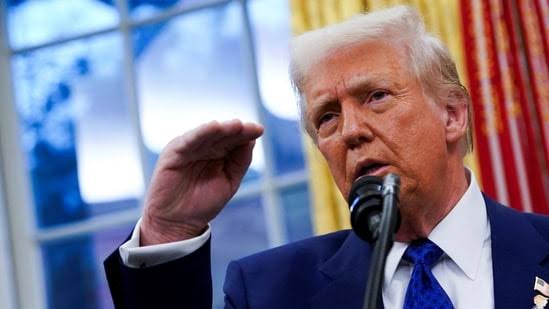
The clock is ticking toward what former U.S. President Donald Trump has dubbed “Liberation Day,” when he has threatened to impose a broad range of tariffs on countries running persistent trade imbalances with the United States.
This move—part of Trump’s aggressive use of presidential powers—is rooted in his belief that the U.S. has been “ripped off by every country in the world” and that reciprocal tariffs are necessary to restore balance. However, critics warn the strategy could ignite a global trade war, triggering retaliation from major trading partners like China, Canada, and the European Union.
The exact scope of the tariffs, set to be announced Wednesday, remains unclear. The levies will vary by country based on existing import duties on American goods, value-added taxes, and other factors. “Expect the unexpected,” said Ryan Sweet, chief U.S. economist at Oxford Economics, who predicts the administration will target the most significant offenders. The key question, he noted, is whether the tariffs are a negotiating tool or signal a broader policy shift.
As the deadline nears, U.S. trading partners are scrambling to reduce their exposure, with reports suggesting India may lower some duties. In addition to reciprocal country tariffs, Trump may also unveil sector-specific levies on industries like pharmaceuticals and semiconductors, adding to new auto tariffs scheduled to take effect Thursday.
Rising Global Tensions
Several countries have already responded to Trump’s earlier trade actions with countermeasures. China and Canada have imposed retaliatory tariffs, while the EU is set to introduce its own by mid-April. Canadian Prime Minister Mark Carney has vowed to respond in kind if Washington moves forward with its plans.
Trump’s latest tariff measures are expected to target the 15% of trade partners with persistent imbalances—a group Treasury Secretary Scott Bessent reportedly calls the “Dirty 15.” While no official list has been released, the U.S. runs its largest goods deficits with China, the EU, Mexico, Vietnam, Taiwan, Japan, South Korea, Canada, and India.
Despite escalating tensions, negotiations remain possible. Greta Peisch, a partner at Wiley Rein and former official at the U.S. Trade Representative’s office, noted that steep tariffs on Mexican and Canadian imports were temporarily paused in February to allow further talks. “There are many possible scenarios: delays, reductions, or immediate implementation,” she said. Trump himself has signaled some flexibility, calling the April 2 tariffs “very lenient.”
Economic Fallout and Industry Pushback
While some U.S. industries—such as domestic steel manufacturers and unions—support Trump’s tariffs, others warn of severe economic consequences. The American Automotive Policy Council, representing Ford, General Motors, and Stellantis, cited a report by economist Arthur Laffer warning that 25% auto tariffs could raise vehicle prices and disrupt supply chains.
The International Fresh Produce Association has cautioned that U.S. tariffs and subsequent retaliation could destabilize farmers and businesses. Meanwhile, the National Retail Federation has warned that reciprocal tariffs could lead to higher consumer prices and reduced household spending power.
More broadly, uncertainty over trade policy could deter business investment and hiring. “A dark cloud of uncertainty hangs over the economy,” Sweet warned, adding that widespread tariffs could drive inflation higher if companies pass on added costs to consumers.